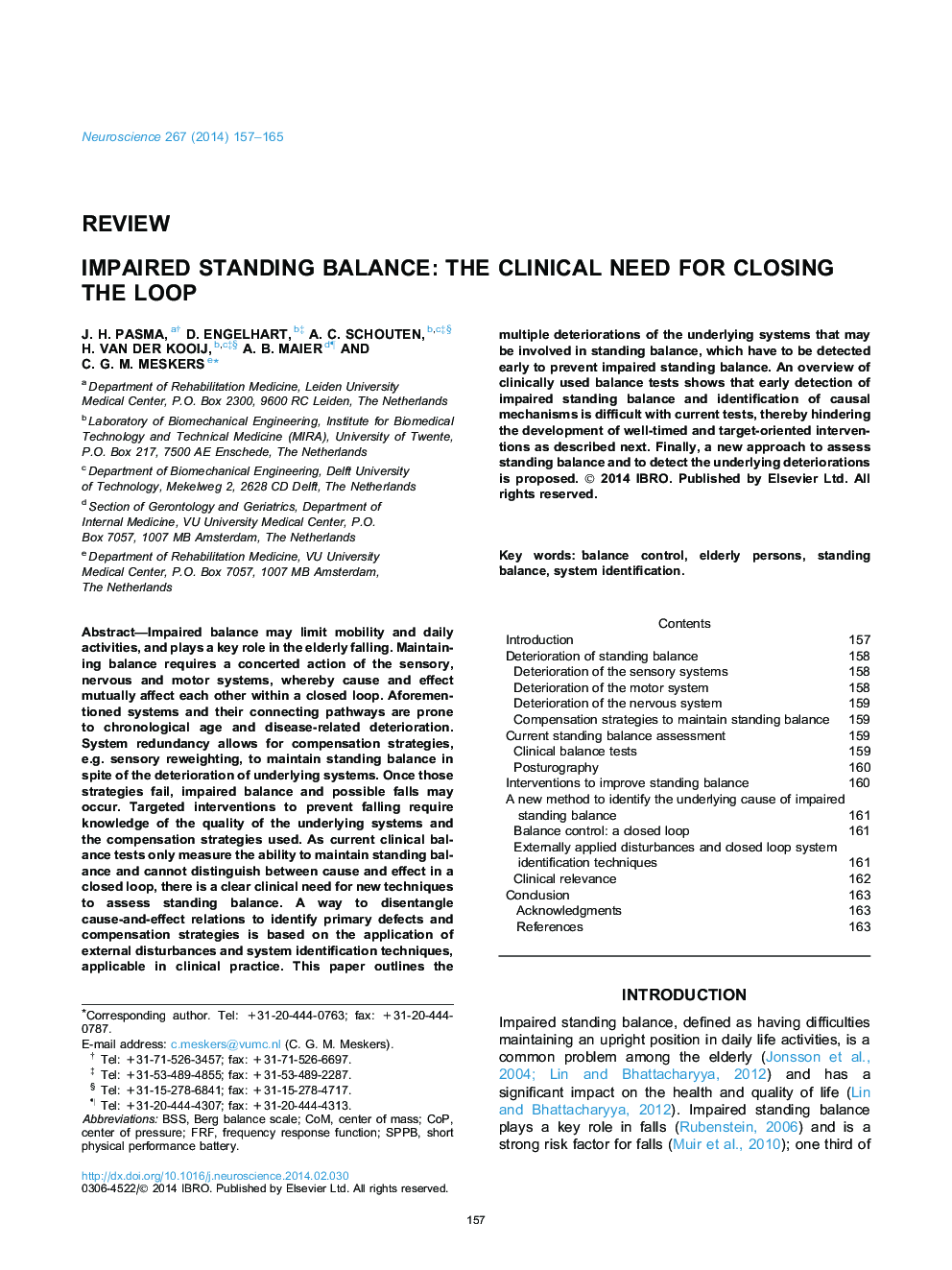| کد مقاله | کد نشریه | سال انتشار | مقاله انگلیسی | نسخه تمام متن |
|---|---|---|---|---|
| 6273958 | 1614809 | 2014 | 9 صفحه PDF | دانلود رایگان |
- Impaired balance has a significant impact on health and quality of life in the elderly.
- There is evidence for therapeutic interventions, which do not focus on underlying systems involved in standing balance.
- Current clinical balance tests do not allow for identification of the weakest link in impaired standing balance.
- Closed loop system identification techniques are required to identify underlying causes of impaired balance.
Impaired balance may limit mobility and daily activities, and plays a key role in the elderly falling. Maintaining balance requires a concerted action of the sensory, nervous and motor systems, whereby cause and effect mutually affect each other within a closed loop. Aforementioned systems and their connecting pathways are prone to chronological age and disease-related deterioration. System redundancy allows for compensation strategies, e.g. sensory reweighting, to maintain standing balance in spite of the deterioration of underlying systems. Once those strategies fail, impaired balance and possible falls may occur. Targeted interventions to prevent falling require knowledge of the quality of the underlying systems and the compensation strategies used. As current clinical balance tests only measure the ability to maintain standing balance and cannot distinguish between cause and effect in a closed loop, there is a clear clinical need for new techniques to assess standing balance. A way to disentangle cause-and-effect relations to identify primary defects and compensation strategies is based on the application of external disturbances and system identification techniques, applicable in clinical practice. This paper outlines the multiple deteriorations of the underlying systems that may be involved in standing balance, which have to be detected early to prevent impaired standing balance. An overview of clinically used balance tests shows that early detection of impaired standing balance and identification of causal mechanisms is difficult with current tests, thereby hindering the development of well-timed and target-oriented interventions as described next. Finally, a new approach to assess standing balance and to detect the underlying deteriorations is proposed.
Journal: Neuroscience - Volume 267, 16 May 2014, Pages 157-165
